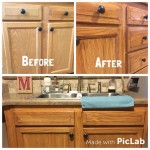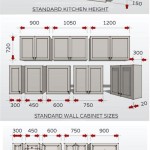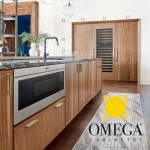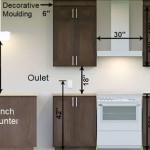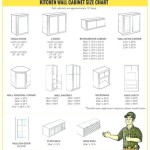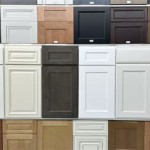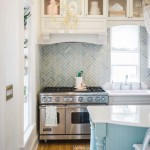Kitchen Cabinet Decorative Accents: Enhancing Aesthetics and Functionality
Kitchen cabinets are more than just storage solutions; they are integral components of a kitchen's overall design and functionality. While the core structure of the cabinets provides the necessary storage space, decorative accents elevate their aesthetic appeal and personalize the kitchen's style. These accents come in various forms, offering homeowners a wide range of options to express their individual tastes and complement the existing décor.
Selecting the right decorative accents for kitchen cabinets requires careful consideration of several factors, including the overall kitchen style, the existing hardware, and the desired level of ornamentation. A well-chosen accent can transform a plain, utilitarian cabinet into a focal point, adding character and visual interest to the space.
Cabinet Hardware as Decorative Accents
Cabinet hardware, encompassing knobs, pulls, and hinges, represents a fundamental yet impactful form of decorative accent. Beyond their functional purpose of opening and closing cabinet doors and drawers, these pieces contribute significantly to the overall aesthetic of the kitchen. The selection of hardware should align with the overall kitchen style, creating a cohesive and harmonious design.
For instance, a traditional kitchen often benefits from ornate knobs and pulls with intricate detailing, possibly crafted from materials like antique brass or oil-rubbed bronze. These finishes evoke a sense of timeless elegance and complement the classic lines of traditional cabinetry. Conversely, a modern kitchen often calls for sleek, minimalist hardware with clean lines and a contemporary finish, such as brushed nickel or stainless steel. These streamlined designs enhance the modern aesthetic and contribute to a sense of understated sophistication.
Furthermore, the scale of the hardware is a crucial consideration. Knobs and pulls should be appropriately sized for the cabinet doors and drawers they adorn. Overly large hardware can overwhelm smaller cabinets, while undersized hardware can appear insignificant on larger surfaces. Careful attention to proportion ensures a balanced and visually appealing outcome. The material chosen also plays a vital role. Durable materials like stainless steel, brass, and bronze guarantee long-lasting performance and resist wear and tear, crucial for high-use areas like the kitchen.
Beyond the standard knobs and pulls, consider incorporating specialty hardware for a unique touch. Options include appliance pulls specifically designed for refrigerators and dishwashers, as well as decorative hinges that add visual interest to exposed cabinet frames. These subtle details can elevate the overall design and create a more personalized kitchen space.
Decorative Molding and Trim
Molding and trim elements provide another avenue for adding decorative accents to kitchen cabinets. These architectural details, typically applied to the edges and surfaces of cabinets, introduce texture, depth, and visual interest. The choice of molding and trim should complement the overall kitchen style and cabinet design, enhancing the architectural character of the space.
Crown molding, installed at the top of upper cabinets, is a particularly impactful decorative element. It adds height and elegance to the kitchen, drawing the eye upward and creating a sense of spaciousness. Crown molding is available in a variety of styles, ranging from simple, minimalist profiles to ornate, multi-layered designs. The selection should be guided by the overall kitchen aesthetic and the desired level of formality.
Base molding, applied to the bottom of base cabinets, provides a grounding element and conceals the gap between the cabinets and the floor. It also protects the cabinet base from potential damage. As with crown molding, base molding is available in various styles and profiles, allowing for seamless integration with the overall cabinet design.
In addition to crown and base molding, decorative trim can be used to embellish cabinet doors and drawers. Raised panel doors, featuring intricate molding patterns, are a classic choice for traditional kitchens. Shaker-style cabinets, characterized by their simple, clean lines, often incorporate a subtle, recessed panel detail to add visual interest. Applying decorative trim to the cabinet frames can also create a more custom and sophisticated look.
When selecting molding and trim, consider the material and finish. Wood is a popular choice for its versatility and natural beauty. It can be stained to match the cabinets or painted to create a contrasting accent. MDF (Medium-Density Fiberboard) is another viable option, offering a cost-effective and durable alternative to solid wood. It is also less prone to warping or cracking, making it suitable for kitchens with fluctuating humidity levels.
Glass Inserts and Door Styles
The style of kitchen cabinet doors themselves presents a significant opportunity for incorporating decorative accents. Different door styles, along with the incorporation of glass inserts, can dramatically alter the appearance of the cabinets and the overall kitchen design.
Glass-front cabinets are a popular choice for displaying treasured dishware, glassware, or decorative items. They add visual depth and brightness to the kitchen, creating a more open and airy feeling. Glass inserts are available in various styles, including clear glass, frosted glass, and textured glass. Clear glass provides unobstructed views of the contents, while frosted glass offers a more subtle and diffused look. Textured glass adds visual interest and can obscure the contents of the cabinets.
Mullions, decorative grids that divide the glass pane into smaller sections, are often incorporated into glass-front cabinets to add a touch of traditional elegance. Mullions can be simple or ornate, depending on the desired style. They are available in various materials and finishes, allowing for seamless integration with the overall cabinet design.
Beyond glass inserts, different door styles offer distinct aesthetic possibilities. Raised panel doors, as mentioned earlier, are a classic choice for traditional kitchens, featuring intricate molding patterns and a sense of formality. Shaker-style doors, with their simple, clean lines, are a versatile option that works well in both traditional and modern kitchens. Slab doors, characterized by their flat, unadorned surfaces, are a popular choice for minimalist kitchens, emphasizing clean lines and a contemporary aesthetic.
Open shelving, although not technically a cabinet door, can effectively serve as a decorative element within a kitchen design. Strategically positioned open shelves provide opportunities to display decorative objects, cookbooks, or plants, adding personality and visual interest to the space. They also offer easy access to frequently used items, enhancing the kitchen's functionality.
Furthermore, consider incorporating custom door panels or inlays to create a truly unique and personalized kitchen design. These can be crafted from a variety of materials, including wood, metal, or even fabric, allowing for endless possibilities in terms of texture, color, and pattern. Custom door panels can transform a simple cabinet into a work of art, reflecting the homeowner's individual style and taste.
Ultimately, the selection of kitchen cabinet decorative accents should be a thoughtful and deliberate process, guided by the overall kitchen style, the existing hardware, and the desired level of ornamentation. When chosen carefully, these accents can elevate the aesthetic appeal of the cabinets, enhance the functionality of the kitchen, and create a space that is both beautiful and practical.
The possibilities for decorative accents extend beyond the elements detailed above. Consider incorporating features like under-cabinet lighting to highlight backsplashes and countertops, adding warmth and ambiance to the kitchen. Install floating shelves alongside cabinets to create display space for decorative objects or cookbooks. Explore the use of decorative corbels or brackets to support countertops and islands, adding architectural interest and a touch of elegance. Adding a custom range hood with decorative detailing can be a stunning focal point.
By carefully considering these various decorative accents, homeowners can transform their kitchen cabinets from simple storage solutions into stunning design elements that reflect their unique style and enhance the overall beauty and functionality of their kitchen space.

18 Ideas For Decorating Above Kitchen Cabinets Design Top Of

Where To Use Decorative Accents And Accessories In Your Kitchen

19 Ideas For Decorating The Top Of Your Kitchen Cabinets Decor Above
:strip_icc()/101634871-9532042e1719420b859d6d4d4b732be3.jpg?strip=all)
16 Ideas For Decorating Above Kitchen Cabinets

14 Ideas For Decorating Space Above Kitchen Cabinets How To Design Spot
:strip_icc()/101705919-46c69aadc4b1401fbb8383b607c37b36.jpg?strip=all)
16 Ideas For Decorating Above Kitchen Cabinets

How To Style Glass Kitchen Cabinets Sanctuary Home Decor

How To Decorate Above Kitchen Cabinets Ideas For Decorating Over Eatwell101

90 Best Kitchen Ideas Decor And Design Photos

18 Easy And Stylish Kitchen Island Decor Ideas
Related Posts

